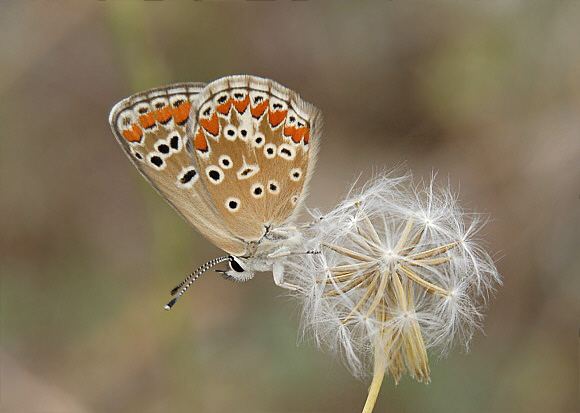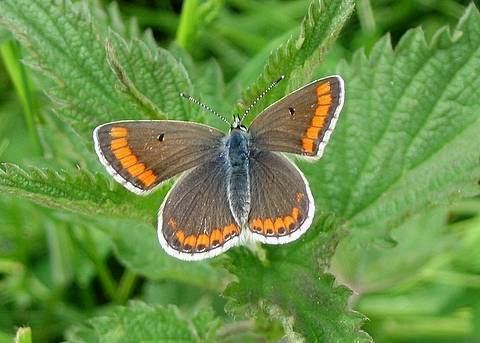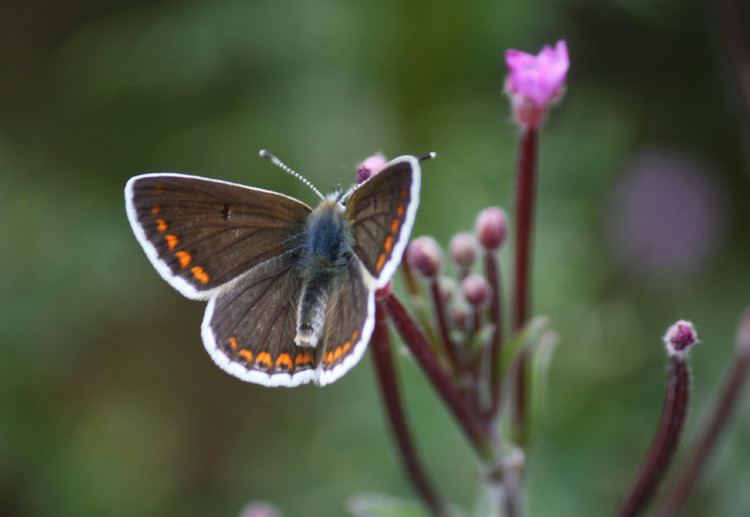Genus Aricia Higher classification Aricia | Scientific name Aricia agestis Rank Species | |
 | ||
Similar Aricia, Butterfly, Common blue, Holly blue, Butterflies and moths | ||
Brown argus aricia agestis fi rildi skord r
Aricia agestis, the brown argus, is a butterfly in the family Lycaenidae. It is found throughout the Palearctic ecozone north to northern Jutland (Denmark) and east to Siberia and Tian Shan.
Contents
- Brown argus aricia agestis fi rildi skord r
- Subspecies
- Appearance and biology Great Britain
- Life cycle and food plants
- References

Subspecies

Appearance and biology (Great Britain)


Although one of the "blues", both sexes are brown on the uppersides with a band of orange spots at the border of each wing. They can be mistaken for other female blues but the brown argus never has any blue scales at the base of the wings like other female blues often do. It could also be mistaken for the northern brown argus (Aricia artaxerxes) were it not for the fact that their ranges do not overlap in the UK, unlike on continental Europe. The underside has the typical "blue" pattern of a greyish/brownish ground colour with black spots outlined in white and a row of orange spots along the border. The pattern of the black spots is the best way to distinguish this species from female common, chalkhill and Adonis blues as they lack the black spot found near the base of the forewing which is present on these three species. This species has seen an expansion in its range in recent years and is widely distributed across south-east England and most of the Midlands with colonies occurring in Wales and as far north as Yorkshire. These northern sites have seen a lot of confusion in recent years with genetic studies looking at various colonies to separate the two Aricia species. Until a few years ago, these northern colonies were thought to be the northern brown argus and more colonies may yet be found to be misidentified. Like other blues it is common on the chalk downlands of southern England but will also use other habitats such as woodland clearings, coastal grasslands and heathland. It is not closely related to the Scotch argus.
Life cycle and food plants


Common rock-rose (Helianthemum nummularium) is the favoured food plant on calcareous soils. In other habitats dove's-foot cranesbill (Geranium molle) and common stork's-bill (Erodium cicutarium) are used and possibly other Geranium species as well. Eggs are laid singly on the underside of leaves. The typically slug-like lycid larvae are green with a pale line along each side and always attended by ants. They hibernate as fully-grown larvae and pupate the following spring. There are two broods a year in the southern colonies with adults on the wing in May and June and again in late July till mid-September but further north they are single brooded and fly in June and July.
